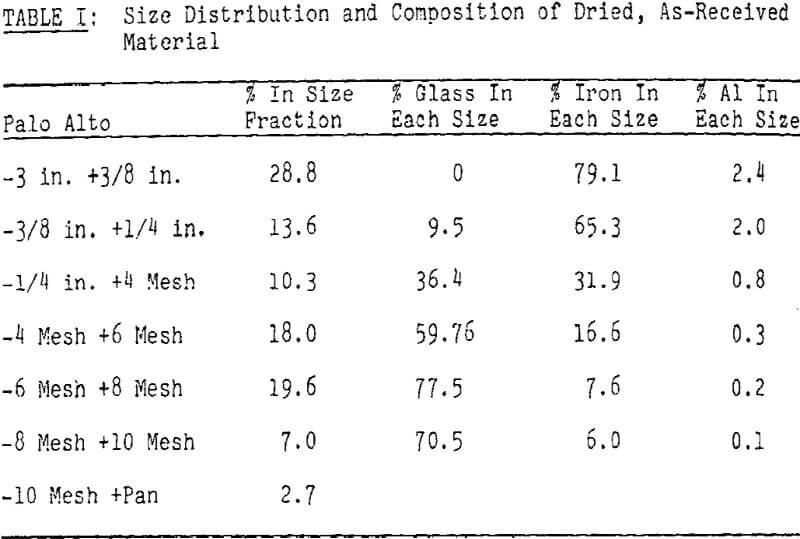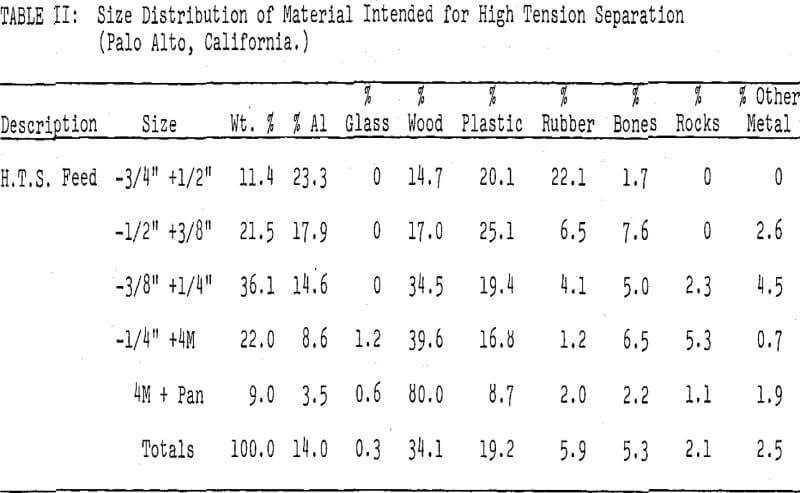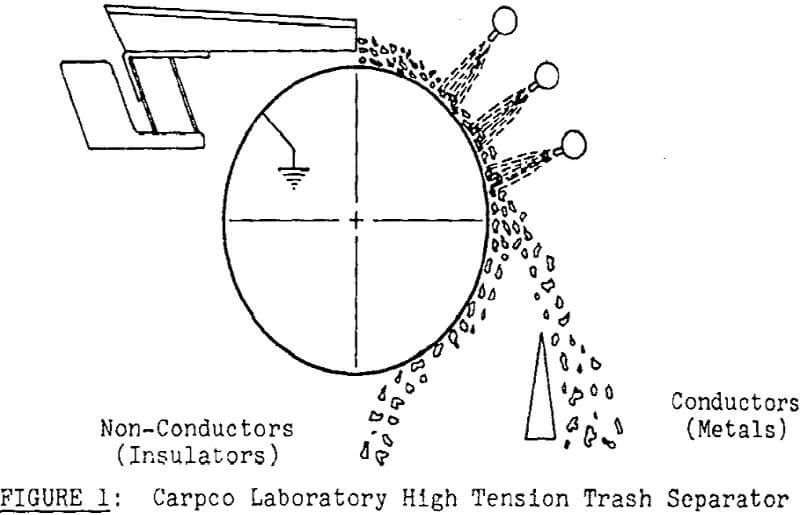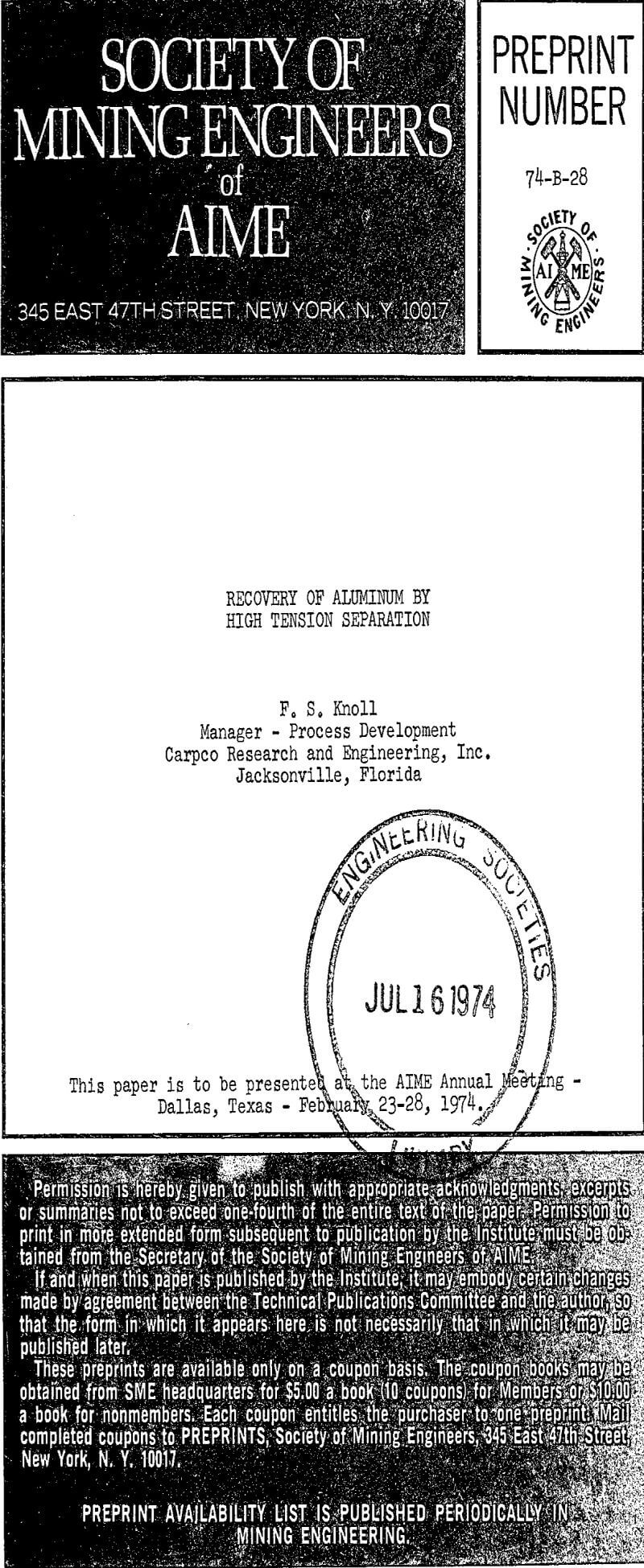The high tension process which separates materials based on relative differences in surface conductivity has been very successful in recovering non-ferrous metals from municipal waste. Aluminum is by far the largest constituent of the total non-ferrous metal fraction; accounting for >95% in most localities. Wire and insulation mixtures from industrial wastes have been treated commercially for several years by a high tension process initially developed for use in the iron ore industry.


Fraas correctly predicted that particles having large surface area to mass ratios could be separated by corona discharge techniques such as high tension separation. If a shape factor of 20:1 (length (a) vs. thickness (c)) that is commonly encountered in inorganic fractions of shredded municipal waste is used.
Treatment capacity is a function of the bulk density of the entering waste stream and is also dependent on the percentage of non-ferrous metals present. Initial testwork on coarse glass-rich fractions from Franklin, Ohio, demonstrated that very high feed rates (200 lbs./hr./lineal inch of rotor) were attainable in high tension separation. Other testwork conducted on aluminum-rich streams from the Garrett Process in California indicates that feed rates ranging from 50-75 lbs./hr./lineal inch of rotor are optimum for this lower bulk density material (S. G. Franklin material = 2.7 vs. S. G. Palo Alto material = 1.3)
Two, three, and four stage high tension flowsheets have been developed to cater to widely divergent types of municipal waste. Air tabling has been employed as a ‘finisher’ to improve the aluminum content of the beneficiated product; especially when the percentage of aluminum in the feed to the aluminum recovery circuit is less than approximately five percent.
Aluminum recovery from municipal waste will be considered, along with glass, as an adjunct to larger tonnage trash disposal schemes such as landfill and pyrolysis. The high tension process as a supplementary unit has been used for preliminary costing studies. A 1000 TPD municipal waste treatment plant is expected to generate approximately 14 TPH of aluminum feedstock to the proposed high tension recovery stage.


